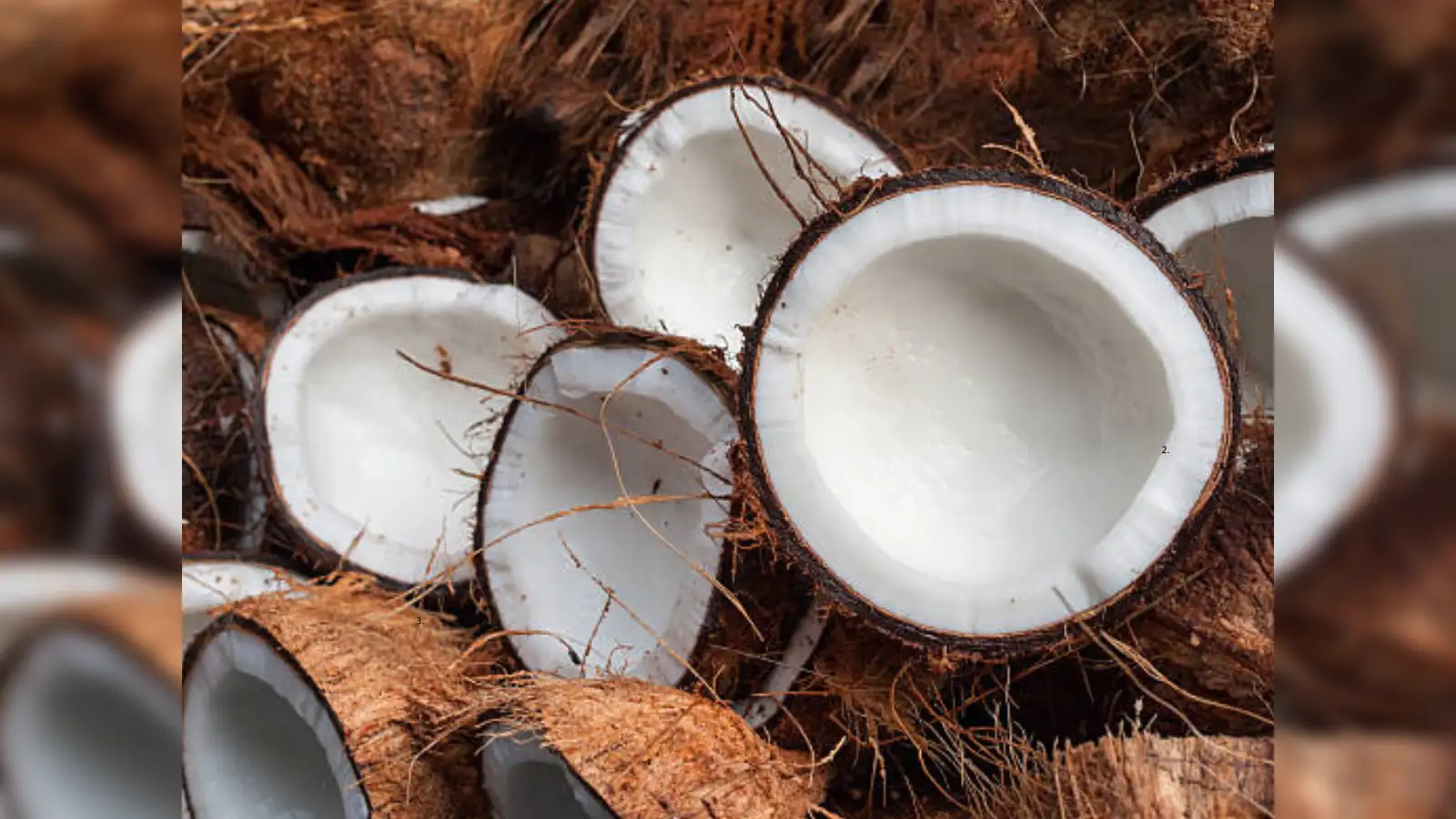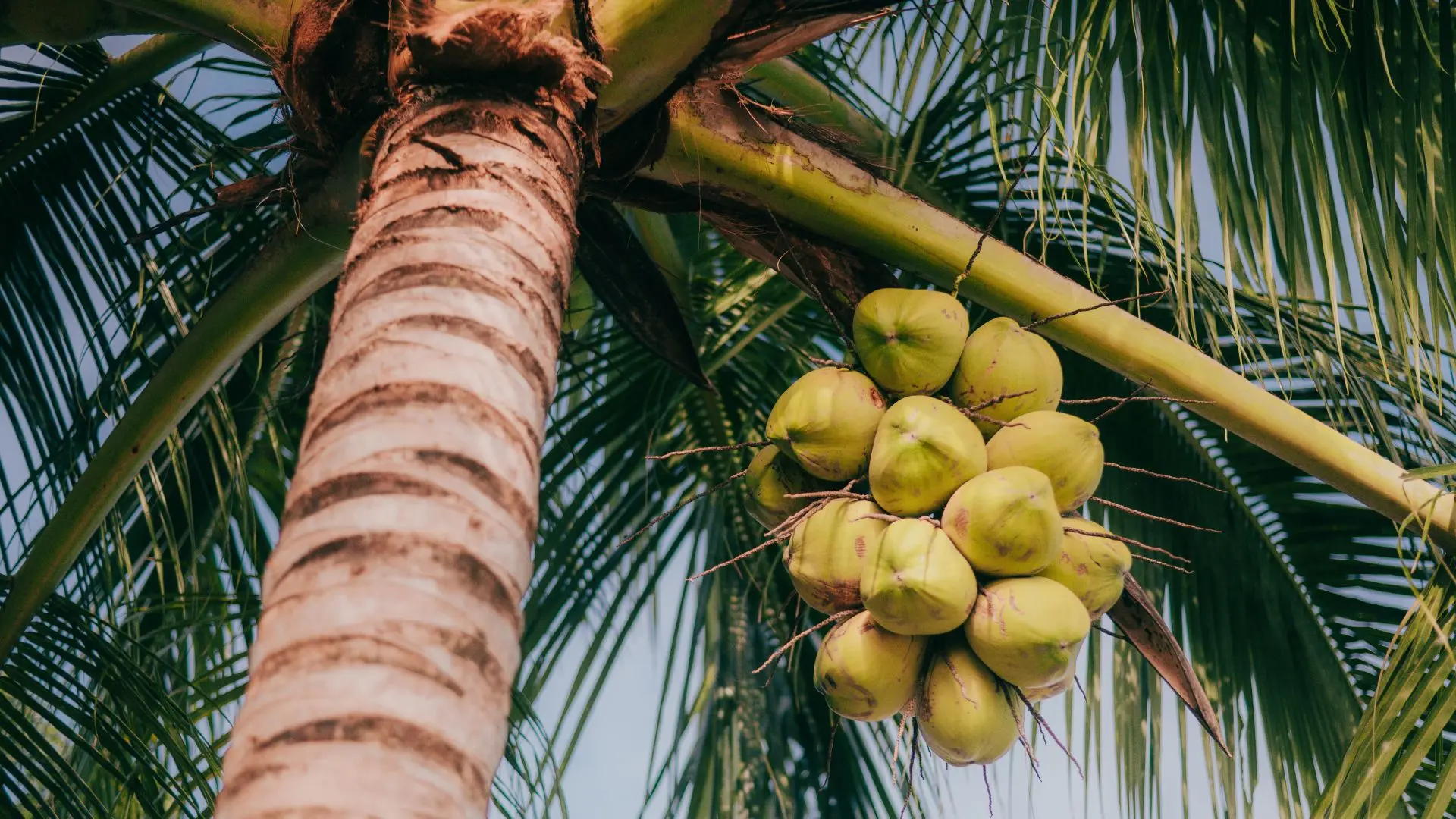After months of peaking coconut prices that briefly lifted farmer spirits, Kerala’s coconut market is now witnessing a sharp and unexpected downturn. Once hailed as a sign of agricultural recovery, the soaring prices have now tumbled—causing distress among growers across the state. The fluctuations have raised concerns not only about economic impacts but also about systemic gaps in agricultural policy and market regulation. Stakeholders are demanding quick government intervention to stabilize the market and prevent deeper financial fallout for thousands of coconut farmers.
The downward shift in coconut pricing has also led to a notable drop in daily wages for coconut climbers and harvest workers. These skilled laborers, already facing a decline in job availability due to mechanization, are now being paid significantly less per tree because farm owners are cutting operational costs. Many have even paused harvesting entirely, waiting for prices to rise again. This ripple effect on associated labor markets highlights how agricultural price slumps have a cascading impact across rural livelihoods, threatening the socio-economic fabric of Kerala’s farming communities.
Retailers, too, are facing complications due to this price instability. While consumer-facing prices have seen only slight reductions, middlemen and distributors are slashing procurement rates to maximize margins, leaving both farmers and end-sellers at a disadvantage. In many local markets, unsold coconuts are being wasted or repurposed for cattle feed. This inefficient supply chain, plagued by price manipulation and poor storage infrastructure, continues to limit fair compensation for growers and prevents market stabilization. Without streamlining the supply process, cyclical price crashes may remain a recurring concern.
Climate unpredictability is another looming threat for coconut farmers in Kerala. Although the current surplus is due to a favorable monsoon, past years have seen droughts, pest attacks, and floods that devastated coconut plantations. This volatility makes long-term planning and investment in the crop extremely difficult. Agricultural experts suggest implementing adaptive practices such as drought-resistant coconut varieties, better irrigation techniques, and real-time weather forecasting systems to equip farmers for future uncertainties. Without climate resilience, even short-term market gains could be wiped out in subsequent seasons.
Cooperative societies and agricultural self-help groups, which once played a strong role in stabilizing farmer incomes, have lost relevance in recent years due to administrative mismanagement and lack of modern tools. Reviving these cooperatives with digital traceability systems, transparent pricing dashboards, and collective marketing platforms could empower farmers to negotiate better prices. Some pilot programs in Alappuzha and Thrissur have shown promise by enabling farmers to bypass middlemen and directly engage with institutional buyers. Scaling up such initiatives could drastically reduce price vulnerability in the future.

Favorable Weather Leads to Oversupply
One of the primary reasons behind the fall in prices is the higher-than-usual yield following this year’s favorable monsoon. The abundant rainfall across major coconut-producing belts such as Alappuzha, Thrissur, and Palakkad boosted productivity, leading to an oversupply in local markets. While good weather was initially celebrated, it has now resulted in market saturation. Wholesale markets are struggling to manage the overflow, pushing down procurement prices drastically. What was once a blessing is now turning into a burden for cultivators relying heavily on stable rates.
Inter-State Market Competition Intensifies
Increased competition from neighboring states like Tamil Nadu and Karnataka has further intensified the pricing pressure. Both states have also recorded strong harvests, and with fewer logistical barriers post-COVID, their produce is flooding Kerala’s markets. Many traders are sourcing coconuts from these states due to marginally lower transport costs and competitive pricing. As a result, Kerala’s farmers are being pushed out of their own market. This inter-state competition is eroding profit margins and exacerbating concerns about long-term sustainability for local coconut growers.
Export Slowdown Dampens Prospects
Coconut exporters have reported sluggish demand from international markets, particularly from the Middle East and Southeast Asia. High global inflation and shipping disruptions have reduced large-scale orders from abroad. Additionally, price-sensitive buyers are turning toward countries like Indonesia, the Philippines, and Sri Lanka, which offer coconuts at significantly cheaper rates. The resulting slump in Kerala’s coconut exports has added pressure on domestic demand, leaving local traders with surplus stock and no immediate buyers to absorb it.
The government’s response to the coconut price slump has so far been limited to advisories and vague assurances, leaving many farmers feeling ignored. While some officials have hinted at possible procurement drives or subsidies, there is little clarity on execution timelines or eligibility criteria. Agricultural unions are now pressing for immediate intervention, including minimum support prices (MSP) and compensation for unsold produce. Without structured policy action, such price dips will continue to erode farmer confidence. For a crop so vital to Kerala’s rural economy, consistent governmental support is essential to ensure sustainability and prevent long-term disillusionment among cultivators.

Reduced Demand From North India
North Indian states, which typically buy large quantities of coconuts during festivals and wedding seasons, have shown reduced demand this year. Experts attribute this to inflationary stress and shifts in consumer habits. Moreover, dry fruit and alternative offerings are replacing coconuts in several traditional rituals and gifting patterns. Without these high-volume markets to offload surplus, Kerala’s produce remains stuck in local warehouses. This changing demand trend is proving especially harmful during a year of excess production.
Onam Demand May Bring Brief Relief
With Onam—the state’s most important harvest festival—on the horizon, there is a possibility of temporary price stabilization. During this period, coconut demand typically spikes due to its central role in culinary preparations and religious rituals. However, analysts warn that the relief may be short-lived. Since supply levels are already too high, the festival demand might not be enough to reverse the overall downward trajectory. Farmers fear that prices may dip further once the festival season concludes and the glut worsens.
Calls for Government Intervention Grow Louder
Farmer associations and local leaders are increasingly demanding state intervention to protect the interests of coconut cultivators. Suggestions include announcing a minimum support price (MSP), creating state-run procurement centers, and providing incentives for the export of value-added coconut products like oil, coir, and tender coconut water. Without such measures, many fear a mass withdrawal from coconut farming, which could have ripple effects on rural employment and Kerala’s agro-based economy. Some farmer groups have even warned of protests if action is delayed.
Farmers’ Voices from the Ground
Farmers on the ground are voicing frustration and despair. Many who had taken short-term loans during the price boom are now struggling to make repayments. According to smallholder growers in regions like Kottayam and Kasaragod, the current prices barely cover even harvesting and transport costs. “We celebrated early when prices touched ₹38–₹40 per nut, but now it’s ₹20–₹22. We feel betrayed,” said one farmer from Alappuzha. For many, coconut farming is their sole livelihood, and this sudden slump threatens to push them into debt cycles.
Agricultural Policy Gaps Highlighted
The current crisis has also exposed long-standing gaps in Kerala’s agricultural policy. Experts argue that while coconut is one of the state’s key crops, it lacks the kind of structured support system that exists for rice or rubber. The absence of consistent price monitoring, crop insurance frameworks, and cooperative support leaves farmers vulnerable to even minor market fluctuations. Economists are calling for a holistic coconut development policy that covers pricing, processing, branding, and export promotion to ensure long-term farmer resilience.
Push for Value-Added Products Gains Momentum
In response to the downturn, industry insiders are urging farmers to explore value-added coconut products to break free from price volatility. This includes producing virgin coconut oil, coir mats, activated carbon, and coconut-based snacks and cosmetics. Several cooperative societies have begun offering training workshops to educate farmers on modern processing techniques and marketing strategies. While transitioning to value addition requires investment and training, experts believe it could insulate the farming community from future price shocks.

Conclusion
Kerala’s coconut price crash is not just a story of market fluctuations—it reflects the deeper vulnerabilities within the state’s agricultural system. From weather-driven oversupply to policy inertia and export challenges, multiple factors have collided to create a perfect storm. While the upcoming Onam festival may offer some reprieve, sustainable solutions lie in long-term policy reform, farmer training, and enhanced value-chain integration. As the humble coconut faces market uncertainty, it’s clear that its future must be supported by more than just tradition—it needs urgent structural change.
One overlooked factor in the price decline is the inconsistent grading and packaging of coconuts from Kerala. Unlike other states that use standardized size, weight, and quality classifications, Kerala’s markets still rely on manual selection and informal grading systems. This lack of uniformity often drives buyers to source from more organized suppliers elsewhere. Establishing government-approved grading systems and modern collection centers could boost both domestic and export appeal, ensuring that Kerala’s coconuts are competitively positioned in an increasingly globalized agri-marketplace.
Finally, the cultural and symbolic value of coconut in Kerala makes this market crisis particularly significant. Known as “Kalpavriksha” or the tree of life, the coconut has long been interwoven into the spiritual, culinary, and economic life of the state. Its sharp fall in value not only impacts income but also morale and identity in coconut-growing regions. Reviving the market is therefore not just an economic necessity—it’s a cultural imperative. Without timely reforms and sustainable systems, the symbol of Kerala’s agrarian pride may face a prolonged crisis.
Follow: Kerala Government
Also read: Home | Channel 6 Network – Latest News, Breaking Updates: Politics, Business, Tech & More

